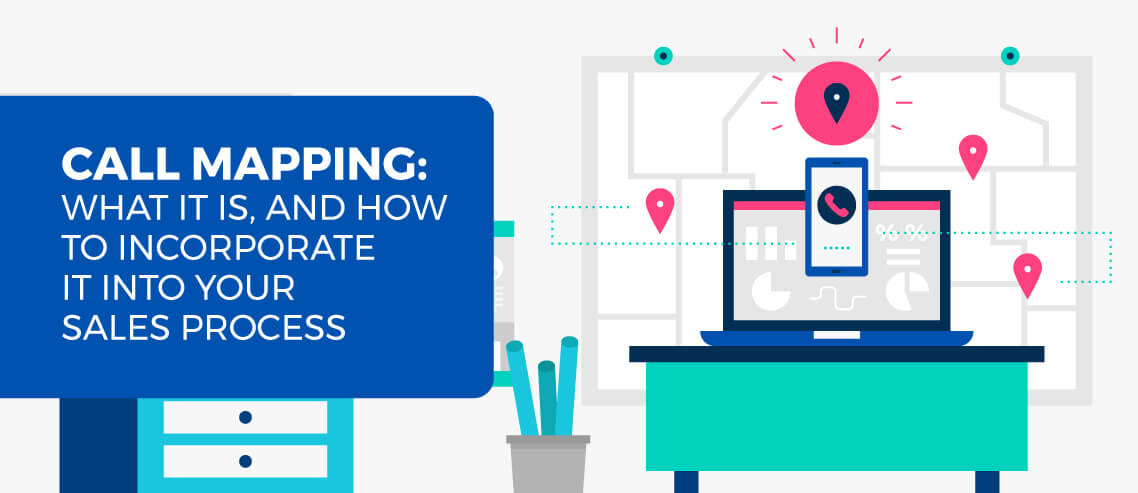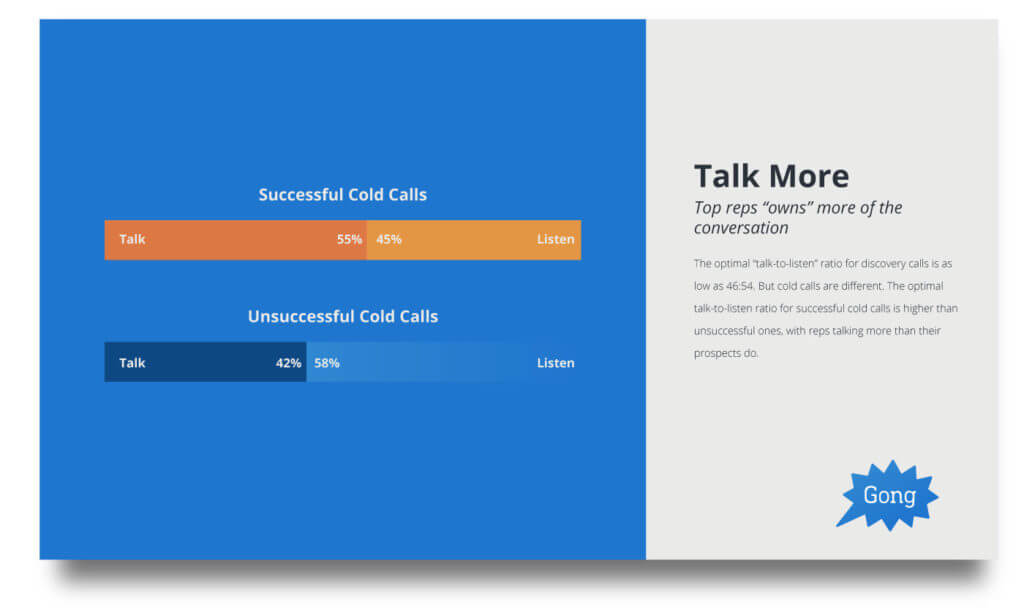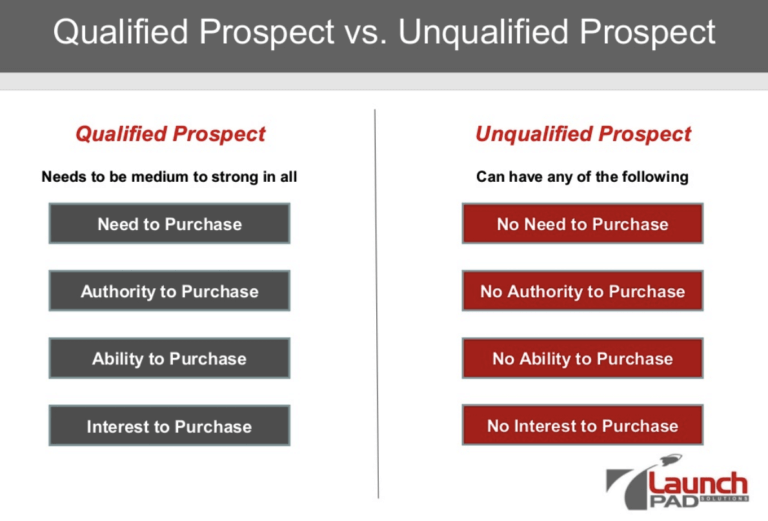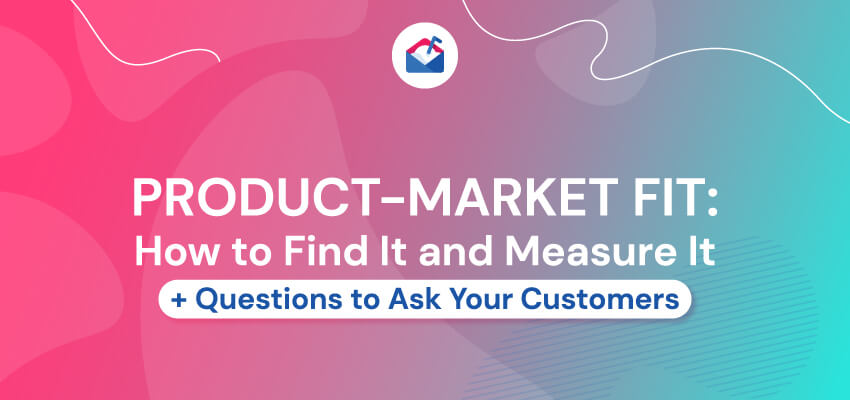Call Mapping: What It Is, and How to Incorporate It Into Your Sales Process

Contents
There’s a lot that goes into closing the deal.
A modern salesperson has to be a jack-of-all-trades, adept at working with new tech tools like email automation, CRM, sales intelligence, and data-backed personalization, while still being comfortable with ‘old-school’ concepts like networking, product knowledge, building rapport, the drop-in…
And cold calls.
Yes, they still have a place in the fast-paced and largely digital world of sales in the 21st century. The list of traits and skills is long and always evolving, but knowing how to work the phone continues to be a very valuable asset.
That said, the blueprint for a successful call today might surprise you if you still adhere to the old “keep it short and listen more than you talk” philosophy.
Successful sales calls are longer rather than shorter, have the sales rep doing most of the speaking – including several longish monologues – and don’t expect much from the prospect in the conversation.

Just as with email, the name of the game is persistence, preparation, and personalization. Consider:
- 78% of decision-makers report having agreed to attend a meeting or event as a result of a successful cold call or email
- It can take an average of eight calls to finally connect with a prospect
- Closing a deal takes an average of five calls for 80% of all sales, but 44% of reps quit after just one follow-up
- Nearly all sales reps – 92% – give up after being told ‘no’ four times, while 80% of consumers say ‘no’ four times before saying ‘yes’
- Approximately 40% of sales reps don’t feel prepared for cold calls
See the disconnect?
You need to be persistent. Follow up multiple times. Keep upping the value.
You need to be prepared. Know your products, their business, your value to them, and their pain points. Do your homework. Have everything you need available and organized in front of you.
You need to personalize. Zero in on one particular decision-maker, and find out as much as you can about them from the usual sources.
Cold calling is a skill like any other. Use tips from the experts, practice your craft, and you will get better.
To get there faster, add call mapping to your sales process.
Call Mapping
The term can mean a few different but interconnected things. I deliberately used the word blueprint earlier. Call mapping is similar.
Fundamentally, you need to map out your call, the route you want it to take to get to the destination (your objective for a particular call), including the stops along the way (the crucial talking points).
It’s a sketch of the desired conversation in advance.
Whether it’s a discovery call – to learn more about a business, their needs, and how you might be able to help – a follow-up, or a closing call, they all need to be mapped.
A sales call of any type is not the time to go flying blind.
So plan your route.
A Quick Word on Mapping Calls
You might also encounter the term mapping call (not to be confused with call mapping).
A mapping call is a cold call to “map” the organizational structure and hierarchy of a business.
These typically follow the same simple structure: start at the top, be brief and polite, play the “lost lamb” card, and work your way through the organization via transfers and referrals until you end up speaking to the right person.
But that’s a topic for another day, so let’s get back to call mapping.
Step 1: Gather and Utilize Insights
You need information and details to map the conversation you want to have.
Turn to industry blogs, trade papers and magazines, services like Upstream, social media profiles (for both the company and individual), company website, and so on to provide the insights you need to be knowledgeable about prospects, their company, and their needs.
Find out about them, their business, their accomplishments, their challenges, and more.
A successful cold call needs to grab and keep their attention in the first 30-60 seconds. You are not trying to sell them. Yet.
The best sales reps will craft an appropriate elevator pitch for each prospect based on collected insights about them. It’s brief, to the point, and could fit on a thought or word bubble.
You can use a pitch template, copy a successful example, or draft one from scratch. Whichever path you choose, be sure to hit who you are, what you do for your ideal customers, what makes you different from the other solutions (your USP), and an easy call-to-action.
Focus on them. Make it memorable, informative, and engaging. A good elevator pitch can be endlessly tweaked and customized depending on need.
Finally, based on the insights and data you’ve collected, define a concrete and specific objective for the call.
If they’re sales qualified, it might be a sale, but it’s more likely agreeing to a meeting to hammer out the details. Or perhaps they agree to review some product literature you’re going to send them and a second phone call to discuss it.
Whatever it is, get a firm commitment. Don’t be satisfied with wishy-washy promises to “connect later” or “sometime next month.” The trick? Craft a response in advance.
In other words, map the call.
Step 2: Qualify the Lead
But don’t waste time. Theirs, or your own.
This step is where the bulk of your mapping happens. If you’ve done your homework, your elevator pitch should hook them, allowing you to qualify the lead.
Map out the appropriate questions to ask to quickly determine whether they are a good ‘fit’: do they need your product, can they afford it, does this person truly have the ability to pull the trigger? Map out questions, complete with follow-up questions based on responses.
Ask informed questions (put those insights you gathered to good use) about their current tool or process, how it might be improved, what features they’d love to have, and more. Get them talking about their challenges, struggles, and frustrations.
Your mapping needs to include the key talking points you must work into the conversation to move the call forward. What questions will lead to what responses that will lead to those points?
Map. Them. Out.
Prospects that are qualified by sales rather than marketing are the second-highest quality leads you can generate. What’s your lead qualification process?

Even if you’re not getting the answers you need, all is not lost. Simply suggest a follow-up in x months, or next quarter, or next year. Then you have a warm lead down the road. That’s still a win.
Sales prospecting isn’t easy, but neither is it impossible. At its simplest, you need to ask questions and guide the conversation to determine if you have a qualified or unqualified prospect.
Is there need, authority, ability, and interest to purchase? That’s a qualified lead.
No need? Move on. Ideally, you can sift these leads out before making the call. Regardless, as soon as it’s apparent there is no need, thank them for their time and end the call.
No authority? Inquire about the appropriate individual to make that decision, and politely ask for a referral.
No ability? Ask questions to clarify why exactly. Is it the price, the terms of service, the length of contract, or something else? Know the possible reasons beforehand, and you’re doing mapping the right way. You can still make it work and qualify the lead.
No interest? As with ability, there are many reasons why they might not have any interest. It’s your job to consider them all in advance, and have talking points laid out to switch the narrative. Change the point of view. Highlight a different benefit. Increase the value.

Map out every detour, pitstop, speed bump, and collapsed bridge along the way from Point A to Point B.
Step 3: Summarize
At the end – even if you’ve determined they’re an unqualified lead – summarize and reiterate everything you’ve learned. Demonstrate that you’ve listened and understand, which leads us to Step 4 …
Step 4: Schedule the Next Step
In specific detail.
The idea isn’t to close the deal on this first call. You want to schedule the next step – a longer follow-up call, an email with additional details, a face-to-face meeting, a demo, a signed contract – with qualified leads.
Best-case scenario? You get a concrete commitment before the end of the call.
If they’re reluctant and offer just a vague commitment, the most successful sales reps don’t push right then and there. They might try one more talking point – mapped out in advance, of course – but no more than that.
Instead, they send an invitation with a specific date and time using their email marketing solution. Their message is personalized and linked to automatic follow-ups.
Mapping isn’t scripting word-for-word. That never sounds natural.
Mapping is being prepared with bullet and talking points. It’s educated guesses and anticipating obstacles.
Mapping keeps the sales department on the same page, removing all ambiguity and making responses uniform and consistent across all channels.
And ultimately, mapping can dramatically decrease the business development life cycle of your leads and move them through your funnel much faster.
As the Boy Scouts say: be prepared. And sell more.





